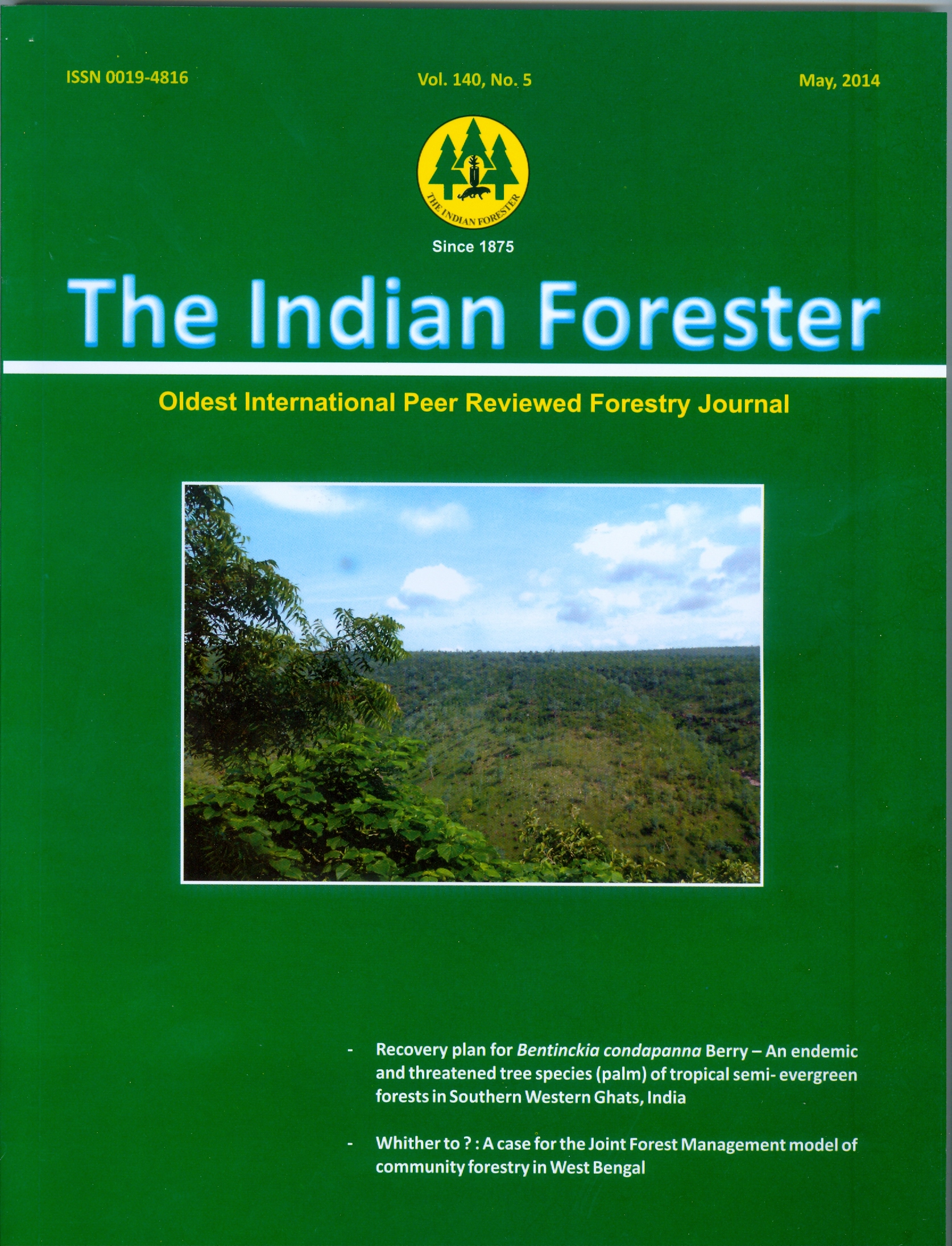Diversity of Macrofungi in the Western Ghats of Karnataka (India)
DOI:
https://doi.org/10.36808/if/2014/v140i5/49102Keywords:
Forests of Karnataka, Fungal Diversity, MacrofungiAbstract
The present investigation was carried out in the forests of five districts of western ghats of Karnataka which includes B.R. Hills of Chamarajnagar, H.D. Kote forest of Mysore, Aanekaadu forest of Kodagu, Bisle forest of Hassan and forests of Chickmagalur districts representing four different habitats such as grass, litter, wood and soil respectively. The fruiting bodies of macrofungi were collected between August 2010 and August 2012. In an extensive survey a total of 135 species of macrofungi belonging to 56 genera and 34 families were enumerated. Association of species was found to be abundant with litter followed by wood, grass and soil respectively Members of the family Agaricaceae were found to be predominant followed by Polyporaceae, Marasmiaceae, Mycenaceae and Russulaceae. Species of macrofuring belonging to 18 other families were also recorded.References
Bresinsky, A. and Besl, H. (1990). A Color Atlas of Poisonous Fungi – A Hand Book for Pharmacists, Doctors and Biologists.Wolfe Publishing Limited, London.
Crous, P.W. (2006). How many species of Fungi are there in tip of Africa. Studies in Mycology, 55: 13-33.
Christensen, C.M. (1981). Edible Mushrooms. University of Minnesota Press, Minneapolis.
Dwivedi, S., Tiwari, M.K., Chauhan, U.K. and Pandey, A.K. (2012). Biodiversity of mushrooms of Amarkantak Biosphere Reserve forest of Central India. International J. Pharmacy and Life Sciences, 3(1): 1363-1367.
Gadgil, M. (1996). Western Ghats: A lifescape. J. Indian Institutional Science, 76: 495-504.
Gates, G.M., Mohammed, C., Wardlaw, T., Ratkowsky, D.A. and Davidson, N.J. (2011). The ecology and diversity of wood-inhabiting macrofungi in a native Eucalyptus oblique forest of southern Tasmania, Australia. Fungal Ecology, 4: 56-57
Hall, I.R., Stephenson, S.L., Buchanan, P.K., Yun, W. and Cole, A.L.J. (2003). Edible and Poisonous Mushrooms of the World. Timber Press, Portland, Cambridge.
Kuo, M. (2006). Identifying Mushrooms. Retrived from the Mushroom Expert.com. Web site: http://www.mushroom.expert.com/identifying.html.
Laessoe, T. (2000). Mushrooms. A Dorling Kindersley Limited, London.
Monoharachary, C., Srudhar, K., Singh, R., Suryanarayanan, T.S., Rawat, S. and Johri, B.N. (2005). Fungal Biodiversity: Distribution, Conservation and prospecting from India. Current Science, 89(1): 58 -71.
Mueller, G.M., Bills, G.F. and Foster, M.S. (2004). Biodiversity of Fungi: Inventory and Monitoring Methods. Elsevier Academic Press,Burlington, USA.
Pegler, D.N. (1997). The Larger Fungi of Borneo. Natural History publications, Kota Kinabalu.
Subramanian, C.V. (1995). Mushrooms: Beauty, diversity, relevance. Current Science, 69(12): 986-998.
Tibuhwa, D.D. (2011). Diversity of macrofungi at the University of Dar es Salaam Mlimani main campus in Tanzania. International journal of Biodiversity and Conservation, 3(11): 540-550.
Vellinga, E.C. (2004). Ecology and Distribution of Lepiotaceous Fungi (Agaricaceae)- A Review. Nova Hedwigia, 78: 273-299.
Downloads
Downloads
Published
How to Cite
Issue
Section
License
Unless otherwise stated, copyright or similar rights in all materials presented on the site, including graphical images, are owned by Indian Forester.





